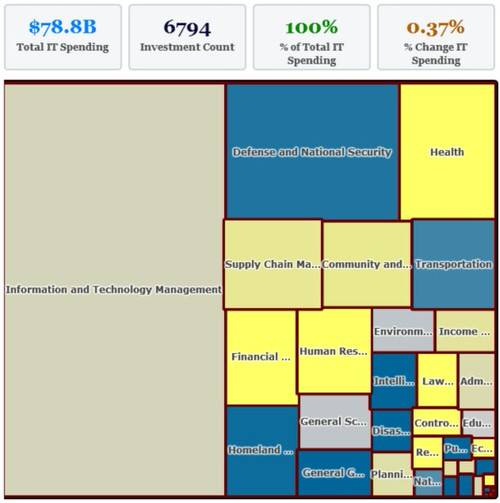Ever since human beings landed on the moon, the state of technology in government appeared to be on a downward slope. Never mind that it was really the U.S. Government that facilitated the original Internet; in public sector offices, the state of computing started lagging behind the private sector ever since IBM mass-produced the microcomputer.

That slope may have bottomed out two years ago, with the urgent need to cut costs, reform practices and save jobs leading to an extraordinarily rapid adoption by federal and state governments of private cloud infrastructure. Now a government IT survey commissioned by MeriTalk, and funded by Microsoft and NetApp, reveals the extent of progress: Among just the agencies whose IT managers were surveyed, federal, state and local governments report saving a total of about $15 billion from their fiscal year 2011 budgets.
The total federal outlay for IT investments in fiscal 2011 totaled $78.8 billion, as shown below in this graph from the U.S. Government’s IT Dashboard. The segment chart shows the enormous chunk of that budget devoted purely to IT management costs, easily triple the size of the outlay devoted to defense and public security.

MeriTalk’s survey of IT professionals in 302 federal, state, and local government agencies should have revealed the usual, much anticipated technology adoption gap. The report was, after all, entitled the “Virtualization Vacuum.” But you can’t complain much about what’s not there, and this year the vacuum may have been swallowed up. Some 82% of federal IT workers and 77% of state IT workers polled said their agencies have implemented some form of server virtualization, with most of those efforts in both camps reported to have already reached their virtualization goals.
The result was calculated, at least among the agencies whose workers were surveyed, in $15 billion of savings, expected to grow to $23.6 billion by 2015.
In search of some type of vacuum someplace, MeriTalk found it in the field of desktop virtualization – hosting government workers’ applications remotely.

This is where the 1970s may yet be alive and well. Among federal IT workers surveyed, 57% said they believed their goals for server virtualization to be more important than their goals for desktop virtualization. For state IT workers, the number was 64%. Now, one possible reason for these lopsided figures could be the obvious one: Any enterprise, public or private sector, needs to have a solid virtualization infrastructure before considering a move to VDI.
Keep in mind, Microsoft helped pay for this survey and has a stake in application virtualization. Nevertheless, the #1 challenge that 43% of those polled said they faced was getting their existing “legacy” applications to run on newer platforms. To quote the MeriTalk report, “Some servers/apps can’t be virtualized due to performance or because they are legacy-type applications that will not run on newer architectures and agencies do not have funds to re-engineer them.” The #2 reason might actually be related to #1 anyway: Some 39% of respondents said the migration would take too much time.
This led Mark Weber, the president of NetApp’s public sector division, to make this comment: “When agencies do begin developing their virtualization plans, they should look beyond servers and consider desktop virtualization as well. The more opportunities that agencies are able to recognize and incorporate into their modernization frameworks, the greater their long-term benefits.”





















